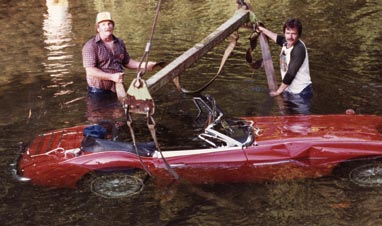Correctly Covering Your Assests!
By Jim McGowan
Insurance is like taxes—you just hate to write the check. It’s a nebulous thing: You send out money but nothing comes back. We all hate buying something we can’t touch or feel. But for anyone who’s had reason to call in that insurance investment, filing a claim can mean the difference between getting your car repaired and back on the road or possibly losing your classic forever.
Insuring a classic or collectible isn’t quite the same as insuring the family grocery-getter. Several different facets need to be examined first. Above and beyond the normal required liability and comprehensive coverage are three other policy options: Agreed Value, Stated Value, and Actual Cash Value. These are very different types of insurance, and you must be aware of their subtle differences. If you have questions about the different types of car insurance, you may reach out to a knowledgeable insurance agent today like the bear river insurance services.
The first consideration in obtaining a car insurance policy is getting a professional appraisal to determine the market, or insurable, value of the vehicle. Your total out-of-pocket restoration investment and/or purchase price should be covered by the value of the policy, so be sure to save all your receipts for work done. Hopefully, the appraisal will reflect that number and more. Check your local yellow pages or publications like Hemmings Motor News (www. hemmings.com) for an appraiser in your area. Hemmings has a national listing of appraisers in each issue, and the publication can be found at large newsstands or in chain bookstores across the country.
Your appraisal should cover every aspect of the vehicle’s condition and list a final value on the Statement of Appraisal report. This document is signed by the appraiser and should be submitted to the insurance company when applying for the policy. Most classic/collector insurance companies will also require a complete photographic record of all areas of the vehicle. Armed with this information, you should be able to acquire an Agreed Value policy.
Most specialty insurance companies like https://carinsurancecheap.net/car-insurance-in-maine/ have minimum qualifications that you and your vehicle must meet. Typically, the car must be at least 15 to 25 years old, not driven more than 2,500 miles a year (additional mileage costs more), and stored in a secure location. You must have a good driving record and have held a valid driver’s license for 10 or more years.
Each company might have different variations on these requirements, but the basics are the same. Most specialty insurance companies also will allow you to select the repair/restoration shop of your choice to perform the repairs.
Now to the really important part: Agreed Value versus Stated Value versus Actual Cash Value coverage. Agreed Value pays the full insured value of your vehicle in the event of total loss with NO depreciation. In other words, in a serious claim event, the insurance will match the appraised value, which should match the value reflected on the policy for complete replacement of the loss. This is the kind of insurance you should seek.

Brokers sometimes interchange the terms Stated Value and Actual Cash Value, but they are not interchangeable, and the difference between them is huge. Stated Value insures up to the amount on the policy declaration page but does not guarantee the full-insured amount. So even with an appraisal, this type of policy may not pay the total replacement cost; only what the insurer deems necessary.
The last type is to be avoided completely. Actual Cash Value is basically the same as new-car insurance. No specific value is placed on the vehicle, and the company will normally offer only replacement cost, less depreciation. In other words, if you have a restored ’65 XKE, the insurance company will financially rate it at the same value as a beat-up, trashed-out model: Condition is not a consideration.
Obviously, motorsports use isn’t normally covered by the collector-car insurers; some specialty companies write no-fault competition policies for professional racing team, and others companies might cover non-track damage to a vintage racecar such as during trailering and paddock display. If you participate in track events, check with the potential insurer to see if theymake a distinction between side-by-side competition (as in vintage racing) and club test-and-tune days.
As you can see, buying collector-car insurance isn’t as simple as making a phone call. Find an insurance services company that will provide Agreed Value coverage for your vehicle, and make sure you understand all the conditions of the policy you purchase.









'Classic Car Insurance' has no comments
Be the first to comment this post!